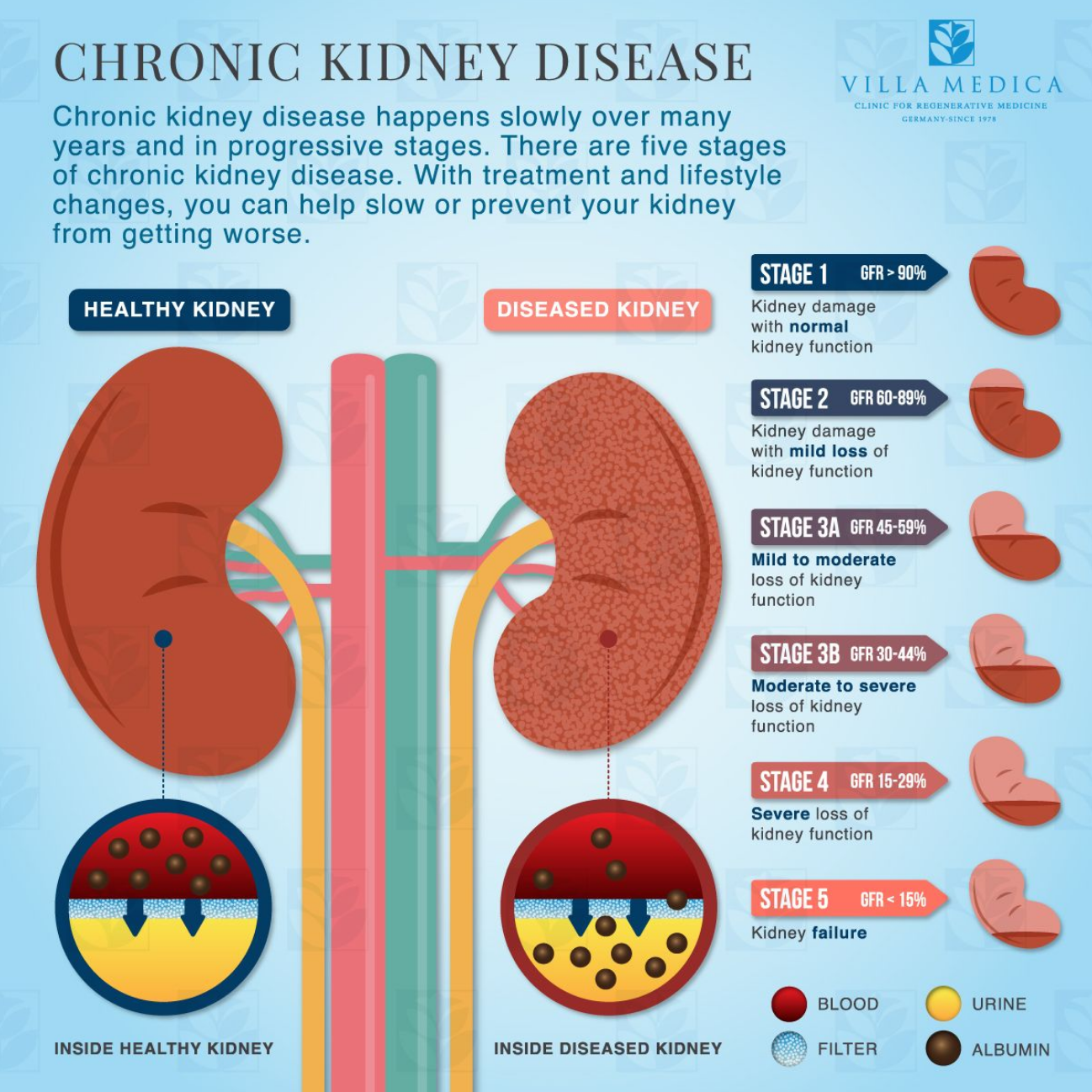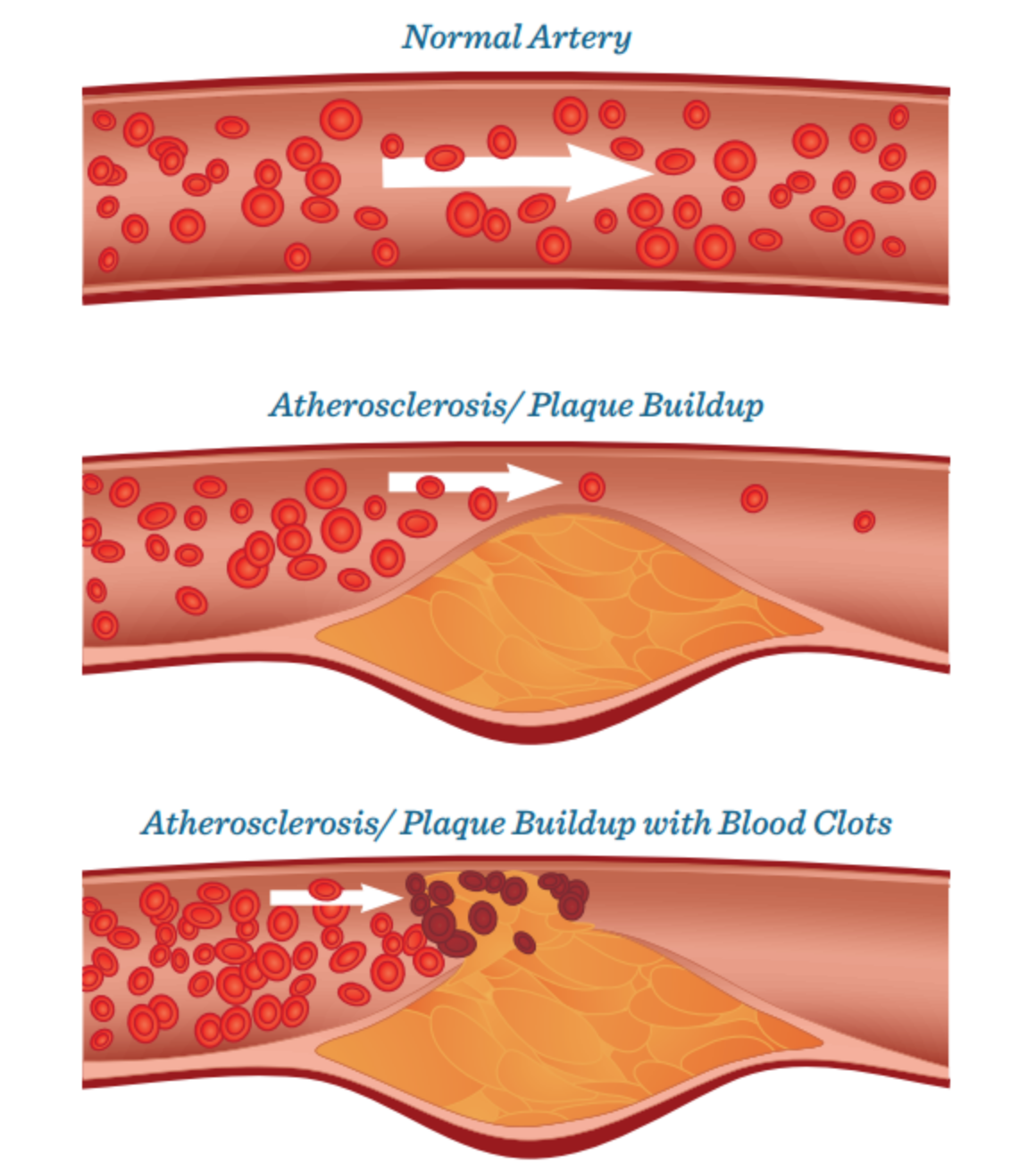48 6.1 Overview of Chronic Kidney Disease (CKD)
Learning Objectives
After reading this section, you will be able to:
- Define Chronic Kidney Disease (CKD) and understand how it is diagnosed.
- Understand how Chronic Kidney Disease results in hyperlipidemia.
What is Chronic Kidney Disease?
The kidney plays a vital role in our bodies such as controlling blood pressure and activating vitamin D (Fraser & Blakeman, 2016). However, one critical role the kidney plays is filtering blood – it drains out the waste products while keeping in the vital components such as proteins required for metabolism (Razmaria, 2016). When this filtering system is not working properly, or is entirely lost, unfiltered waste material is capable of entering our blood circulation and other organs, resulting in severe complications such as edema, kidney failure, and heart damage (Razmaria, 2016).
When an individual experiences kidney dysfunction for a period of 3 months or more, it becomes classified as chronic kidney disease (CKD) and makes an individual at an increased likelihood of developing complications like those denoted above. Unfortunately, symptoms of kidney dysfunction do not appear until the disease has substantially progressed, thus early detection using blood and urine samples is key for avoiding disease progression.

How is CKD Diagnosed?
Diagnosis of CKD is primarily based on measuring the glomerular filtration rate (GFR) of CKD patients. GFR measures the amount of creatinine in the blood, which shows how well the kidney is functioning (Chen et al., 2019). Creatinine is a waste product produced by the muscles, with the majority being excreted in the urine and almost none being reabsorbed by the kidney. The creatinine clearance rate (CCR) is a measure of how much creatinine-free blood the kidney can make (Pickering, Frampton, Walker, Shaw, & Endre, 2012); the greater the CCR, the better the kidney is functioning. To derive the GFR from the CCR, various formulas can be applied. In general, the greater the CCR, the lower the GFR in a healthy individual (the opposite holds true in CKD patients).
In addition to blood and urine tests, screening can also be used for diagnosis (as shown below):
- Ultrasound: used to locate any tumors or blockages that could lead to kidney failure (Thurman et al., 2018)
- X-rays: detect the presence of kidney stones
- computer tomography
- magnetic resonance imaging
Here’s a video that summarizes the pathophysiology of CKD:
(Chronic Kidney Disease – Causes, Symptoms, Diagnosis, Treatment, Pathology – YouTube)
The Link Between CKD and Hyperlipidemia
Cardiovascular disease is the leading cause of death in CKD patients as CKD results in hypertension and hyperlipidemia (Levin, 2003). CKD results in the downregulation of the enzyme lipoprotein lipase (LDL), which is responsible for breaking down fat, in the form of triglycerides (TG) (Yamamoto & Kon, 2009). When such an enzyme is downregulated, there is reduced clearance of TGs resulting in increased levels in CKD patients. CKD also results in the downregulation of hepatic Low Density Lipoprotein receptor-related protein (LRP), which causes a reduced uptake of Low Density Lipoprotein (LDL) by the kidneys, and thus, increased levels in CKD patients (Yamamoto & Kon, 2009). The downregulation of both these factors predisposes CKD patients to hyperlipidemia, which then may progress to atherosclerosis.

As shown in the figure above, atherosclerosis results when lipid build-up forms a plaque in the arteries; if untreated, plaques may eventually lead to a blocked artery and reduce blood flow. If in the heart, a CKD patient may succumb to the clot and die from a cardiovascular-related death.
Due to the risk associated with hyperlipidemia, current treatments for CKD patients aim to reduce LDL or TG levels, such as that of atorvastatin drug therapy.
